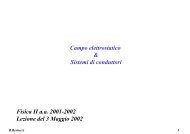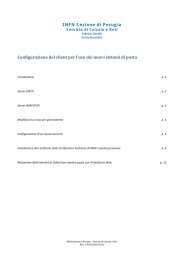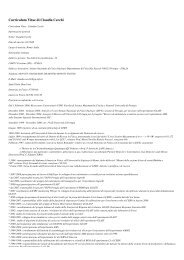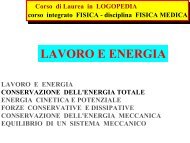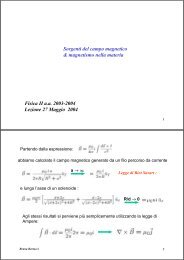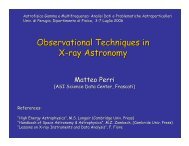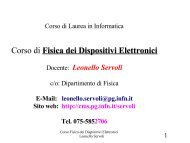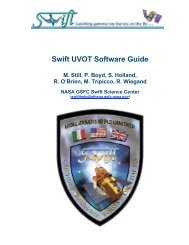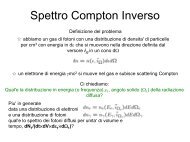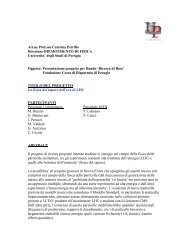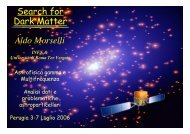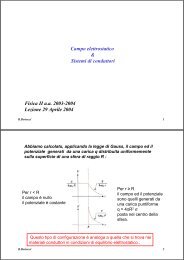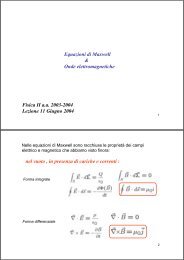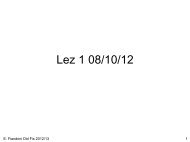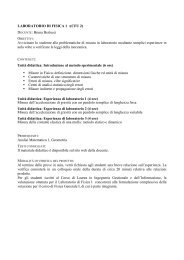Entanglement entropy at quantum critical points: Can you ... - INFN
Entanglement entropy at quantum critical points: Can you ... - INFN
Entanglement entropy at quantum critical points: Can you ... - INFN
You also want an ePaper? Increase the reach of your titles
YUMPU automatically turns print PDFs into web optimized ePapers that Google loves.
• The boundary terms impose continuity of the fields in the CFT because strong local<br />
fluctu<strong>at</strong>ions are penalized in the action. A key fe<strong>at</strong>ure of the replicas in the<br />
numer<strong>at</strong>or is th<strong>at</strong> each replica on A is connected symmetrically to two different<br />
replicas on B and vice versa. The symmetry, which for N replicas is the Schoenflies<br />
group C Nv (the cyclic group plus vertical mirror plane), prevents a unique<br />
idenfitic<strong>at</strong>ion of replicas on A with replicas on B except for N = 1, so the<br />
numer<strong>at</strong>or cannot be equivalent to the denomin<strong>at</strong>or (N free fields on A ∪ B). Instead<br />
the fields from different replicas are forced to agree on the boundary: schem<strong>at</strong>ically<br />
Tr ρ n A =<br />
Z(n configur<strong>at</strong>ions agreeing on the boundary)<br />
Z(n independent configur<strong>at</strong>ions)<br />
= Trρ n B<br />
• Trρ n A can be put in a form th<strong>at</strong> simplifies taking the deriv<strong>at</strong>ive as n → 1: for an<br />
explicit realiz<strong>at</strong>ion, consider the case of a free scalar field. Then the condition th<strong>at</strong> n<br />
scalar fields φ i agree with each other on the boundary can be s<strong>at</strong>isfied by forming<br />
n − 1 linear combin<strong>at</strong>ions 1 √<br />
2<br />
(φ i − φ i+1 ), which vanish <strong>at</strong> the boundary i.e., s<strong>at</strong>isfy<br />
Dirichlet boundary conditions, plus one linear combin<strong>at</strong>ion 1 √ n<br />
Pi=1,...,n φ i th<strong>at</strong><br />
has no boundary condition (i.e., is a free field on A ∪ B).<br />
23



